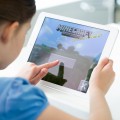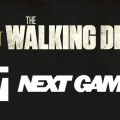
Microsoft to release free, early-access Minecraft Education Edition which allows students to play video games in classrooms.
Being able to play video games at school is a dream come true for many students.
Soon, it will become part of the curriculum.
Microsoft recently announced plans to introduce an educational version of Minecraft at some schools. About 100 schools in 30 counties will start testing the Minecraft Education Edition in May, followed by a free, early-access program available for any educator to download in June.
Microsoft hasn’t said when the final version will come out or how much it will cost. During the summer, Microsoft plans to work with teachers on developing lesson plans, sharing learning activities and creating reusable class projects.
The hugely popular computer game allows players to turn trees, animals and minerals into tools, weapons and shelters to survive against attacks. Players interact with the game world by placing and breaking different types of blocks in a three-dimensional setting.
In the classroom, Minecraft can be used to engage students in a range of subjects, from STEM projects and coding to arts and architecture. The game’s exploratory element allows students to launch their own adventures and describe the virtual worlds they are exploring. More than 70 million copies have been sold.
You Might Also Enjoy: Minecraft to Become an AI Laboratory
In order to download the education edition, teachers will need Windows 10 or OS X El Capitan and an Office 365 account. A website provides sample lesson plans and stories from teachers who are already using Minecraft in their classrooms.
Introducing Minecraft as a teaching tool was one of Microsoft’s goals after acquiring the game’s Swedish maker, Mojang, in 2014 for $2.5 billion. The game also has been used by engineers doing artificial intelligence research.
Minecraft is not the only video game to be used for educational purposes.
Nintendo recently partnered with the San Francisco Public Library to offer a series of lessons about game design using the Wii U game Super Mario Maker. The game allows players to craft their own Mario stages and share them with others online.
The goal was to teach students the basics of level design and to start them thinking about the strategy and creativity that goes into making video games.





